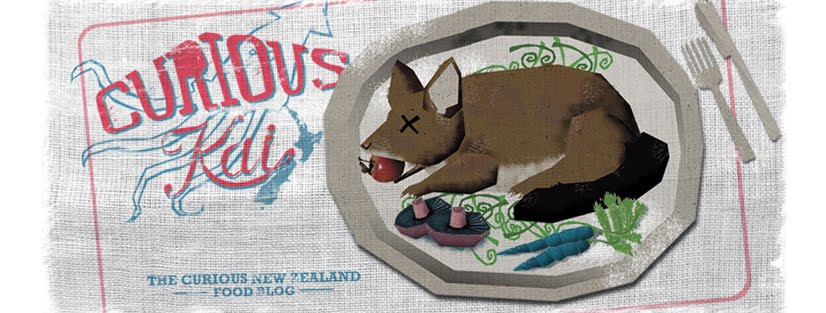 I was cleaning out my fridge the other day (no treasures to be found, apart from a bottle of creaming soda mix for my Sodastream - w00t!) ) when I came across this, the last of the membrillo I made back in May. Membrillo, originating in Spain, is a firm sliceable paste made from quince, typically served with manchego. Other cheeses work just as well; when I made it, I was shovelling it down with some vintage gouda - delicious! It's still in excellent condition, thanks to its high sugar content and having lived in the fridge all this time.
While quince aren't in season until autumn, knowing how to make membrillo is a handy skill to have. Like lemons and grapefruit in this country, it's not uncommon to see quince languishing on trees and going to waste (a bugbear of mine), due to folk being unaware of their potential. Write this down and consider making it once they're available; quince paste ain't cheap to buy, plus it's immensely satisfying to make. Here's the recipe:
Membrillo
I was cleaning out my fridge the other day (no treasures to be found, apart from a bottle of creaming soda mix for my Sodastream - w00t!) ) when I came across this, the last of the membrillo I made back in May. Membrillo, originating in Spain, is a firm sliceable paste made from quince, typically served with manchego. Other cheeses work just as well; when I made it, I was shovelling it down with some vintage gouda - delicious! It's still in excellent condition, thanks to its high sugar content and having lived in the fridge all this time.
While quince aren't in season until autumn, knowing how to make membrillo is a handy skill to have. Like lemons and grapefruit in this country, it's not uncommon to see quince languishing on trees and going to waste (a bugbear of mine), due to folk being unaware of their potential. Write this down and consider making it once they're available; quince paste ain't cheap to buy, plus it's immensely satisfying to make. Here's the recipe:
Membrillo
- 1.8 kg of quince, washed, peeled, cored, roughly chopped
- 1 vanilla pod, split and scraped
- lemon peel, 2 band-aid sized strips
- 3 tbsp lemon juice
- sugar - keep it handy; the amount you'll need won't be determined until we start cooking
Place quince pieces in a large pot and cover with water. Add vanilla pod, seeds and lemon peel and bring to a boil. Reduce to a simmer, cover, and cook until the quince pieces are soft, about half an hour.
Strain the water from the quince pieces. Discard the vanilla pod but keep the lemon peel with the quince. Blitz with a stick mixer or a food processor. Now weigh the quince - whatever amount you have, you'll need the equivalent amount in sugar eg, 5 cups of quince puree = 5 cups of sugar.
Return the quince to the pot. Heat to medium-low. Add the sugar. Stir with a wooden spoon until the sugar has completely dissolved - this step is important; if it does't dissolve properly, it won't gel. Once done, add the lemon juice.
Continue to cook over a low heat for 1 - 1.5 hours, stirring occasionally. The paste will gradually thicken and turn an orangey pink colour.
Preheat oven to a low 55°C. Line an 18 cm x 22 cm pan with baking paper. Grease it with a thin coating of butter and pour in the paste. Using a knife, smooth out the paste so that it's evenly distributed, and place in the oven for about an hour and a half. Remove from the oven to cool.
To serve, cut into cubes or wedges and pair with cheese, traditionally manchego. To store, wrap in cling film and place in the fridge.
 Handy links:
So what exactly is a quince? clickety
Things to do with quince paste clickety
Handy links:
So what exactly is a quince? clickety
Things to do with quince paste clickety





























































